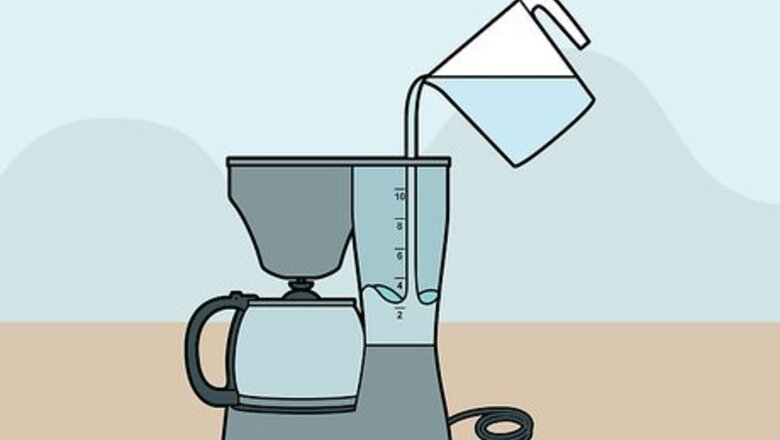
views
Using a Standard Coffee Maker
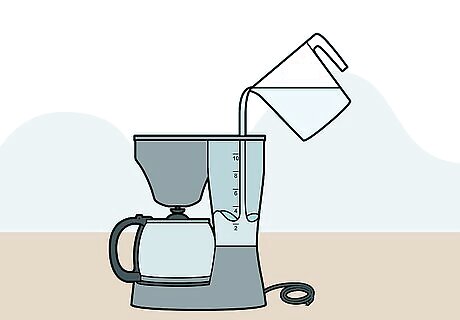
Fill the machine with water. Most coffee makers will have a water reservoir which you'll need to fill before brewing. Only pour in as much water as you'd like to brew, since the machine will continue to brew until the reservoir is empty. Always use clean filtered water for the best taste. Filtered water can also prevent mineral deposits from building up on the machine's tubing.
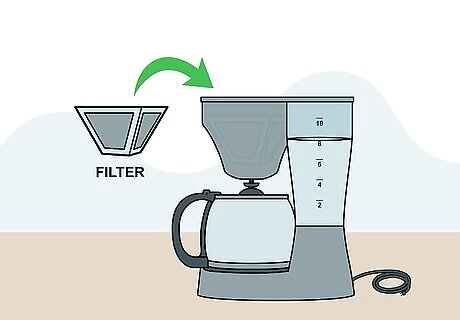
Insert the filter. Use the filter that comes with the machine. Your machine may have a flat-bottomed plastic reservoir for you to put a paper filter in or your machine may have a reusable metal mesh filter that is shaped like a cone. If you use a paper filter, be sure to use one that's large enough to fit your pot. If you use a reusable filter, take care to clean it in between brewing. EXPERT TIP Rich Lee Rich Lee Coffee & Food Program Director, Spro Coffee Lab Rich is the Coffee & Food Program Director of Spro Coffee Lab in San Francisco, a California-based company that specializes in craft coffee, experimental mocktails, and culinary food science. Together with his team, Rich strives to bring forth a uniquely transcendent experience, free of stereotypical eats and drinks. Prior to owning his own business, Rich was a barista for big name coffee retailers such as Blue Bottle Coffee and Sightglass. Rich Lee Rich Lee Coffee & Food Program Director, Spro Coffee Lab Did You Know? Paper filters are the most commonly used for coffee. There are two types of paper filters—bleached and unbleached. Bleached filters introduce less paper flavor into your coffee.
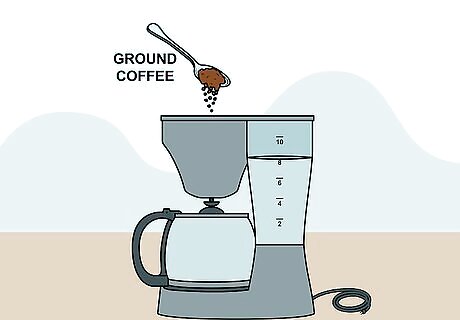
Measure out your coffee. Use medium to medium-fine ground coffee that you've preferably ground yourself. Grinding the beans immediately before brewing will give your coffee more flavor. Use 1 heaping tablespoon of grounds for every 5 ounces of water. Place the grounds in the filter. You can always adjust this ratio, using more or less coffee or water to get your desired coffee strength. Store unused ground coffee in an airtight container away from light, heat, and moisture. Try to use it within a week.
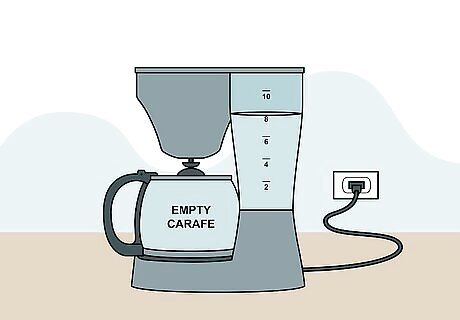
Prepare your machine. Your coffee maker should be clean and ready to go. Make sure the machine is plugged in and the empty carafe is on the burner plate. Some coffee makers have an automatic start feature which you can set at this point. If you do, you can program the machine to start brewing coffee at a certain point during the day, so long as it's prepared. At this point, water and coffee grounds should already be in the machine.
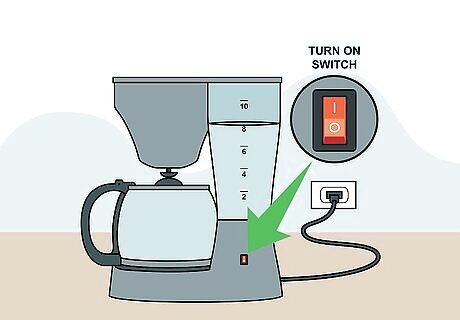
Brew the coffee. Turn on your coffee maker. For many simple coffee makers, this just means pressing a single button, but some coffee makers allow you to customize how much water you'd like to brew, how strong you want your coffee, or how long you'd like to brew it. Read your machine's owner's manual to learn about its brewing capabilities. Avoid leaving the carafe or pot on the burner while the machine is on for a long time after your coffee has brewed into it. This can continue to cook the coffee, giving it a burnt taste.
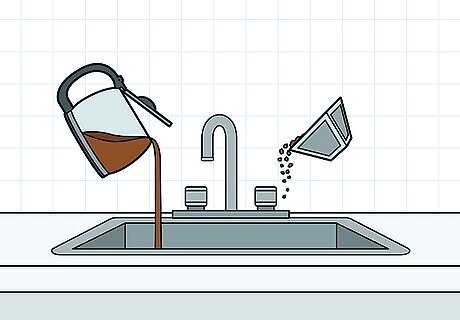
Clean up. Don't leave old coffee to sit in the pot or leave grounds in the filter. If left long enough, they'll grow mold and make the coffee machine smell. Instead, toss or compost your used coffee grounds. Wash out the coffee pot or carafe and don't forget to rinse out the filter or filter holder. Follow the manufacturer's instructions for deep cleaning the machine on a regular basis. This usually involves alternating brew cycles of hot water and vinegar which can prevent mineral buildup in the machine.
Using a Chemex Brewer
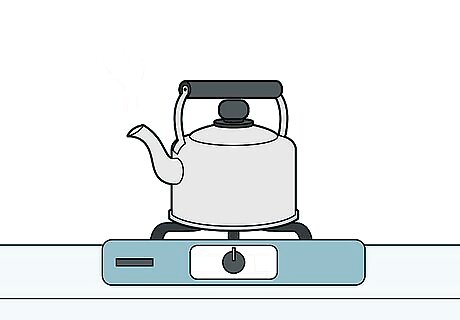
Boil water. Bring a pot of water to boil. You'll want to use water that's as close as possible to 200 °F (93 °C) for brewing your coffee. Be sure to use clean, filtered water for the best taste. If you're brewing a very dark roast, try to heat your water to 195 °F (91 °C) to prevent over-dissolving and bitterness. Either use a kettle that has a long thin spout or carefully transfer the water to a pouring kettle with a long thin spout. Take care not to burn yourself when handling boiling water.
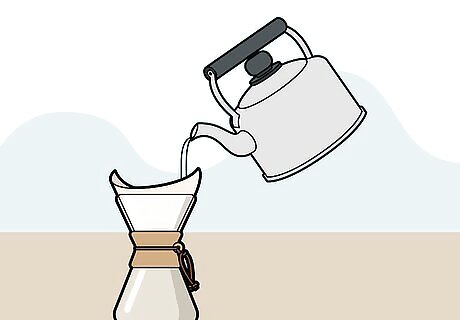
Preheat the Chemex and filter. Unfold your Chemex paper filter so that it's shaped like a cone. Set it in the top part of the Chemex. Pour a little hot water over the filter so that it's completely soaked. Carefully pour out and discard the soaking liquid. This will help create a seal against the Chemex pot, can get rid of any paper taste from the filter, and will preheat your pot, so you don't end up with cold coffee.
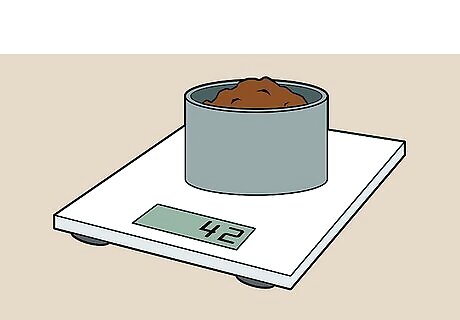
Measure out your coffee. Ideally, you should weigh your ground coffee so you get an accurate measurement. Weigh out 42 grams or use 6 tablespoons of ground coffee for an 8-cup Chemex. Always use medium-coarse grounds. If you can, grind your beans just before using them. Fresher beans will make a better tasting pot of coffee. If you need to buy pre-ground coffee, just take care to store it in an air-tight container out of direct sunlight and use it within a week.
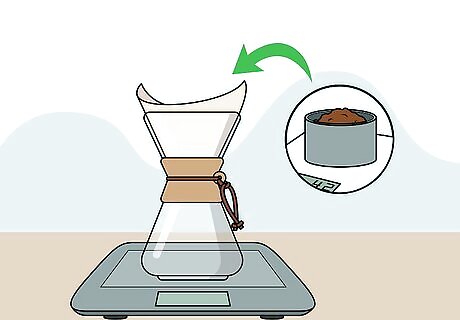
Prepare the Chemex. Place the grounds in the pre-moistened filter that should still be in the top of your Chemex. Set the Chemex on top of a digital scale. You should also have a digital timer or clock ready before you start brewing. Make sure to zero out the scale once the prepared Chemex is on it. This will help you accurately measure out the water.
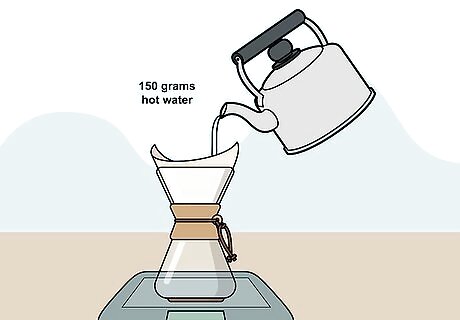
Saturate the grounds. Start the digital timer or look at the clock to keep track of when you start brewing. Slowly pour about 2/3 of a cup or 150 grams of the hot water over the grounds in the filter. Gently stir the grounds with a spoon or chopstick. Stirring can break up any clumps of coffee grounds and make sure the grounds are completely saturated.

Wait and pour water over the grounds. Once your grounds are saturated, wait around 45 seconds. Slowly, pour about 2 1/2 cups or 450 grams of water over the grounds. The water should come almost to the top of the Chemex. You should use a circular wiggling motion when pouring the water over the grounds. This can help mix the coffee and water together.
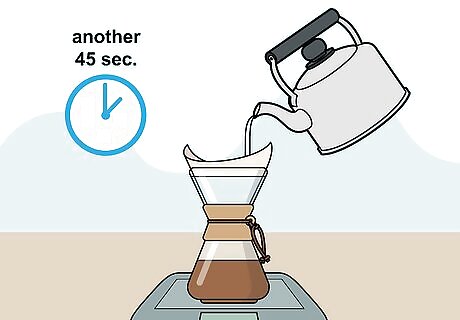
Wait and add more water. Wait another 45 seconds. This will give the coffee a chance to brew while slowly filtering into the Chemex. Add more water. Slowly, pour enough to almost completely fill the filter and cover the grounds. Your scale should read close to 700 grams.
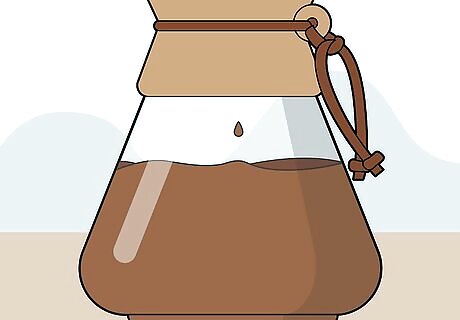
Let the coffee brew. The water will slowly filter through the grounds and the paper, into the bottom of the Chemex. This process should take a few more minutes. You don't need to stir the coffee; just let it filter down. The entire process should take around 4 minutes, from when you started saturating the grounds to when it's done brewing.
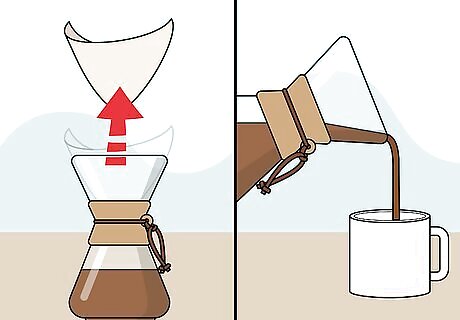
Remove the filter and serve. After you've brewed your coffee for around 4 minutes and it's reached enough volume, lift up the filter and let it drain a few seconds. Set the filter aside. Swirl the coffee in the bottom of the Chemex and pour it into two mugs. There's a small glass bubble on the side of your Chemex. This indicates a 20 ounce measurement.
Brewing in a Single Cup

Boil water. Bring a pot of water to boil. To brew your coffee, try to get your water as close as possible to 200 °F (93 °C). Be sure to use clean, filtered water for the best taste. Either use a kettle that has a long thin spout or carefully transfer the water to a pouring kettle with a long thin spout. Take care not to burn yourself when handling boiling water. For a very dark roast, use water closer to 195 °F (91 °C) to prevent getting a burnt, bitter taste.
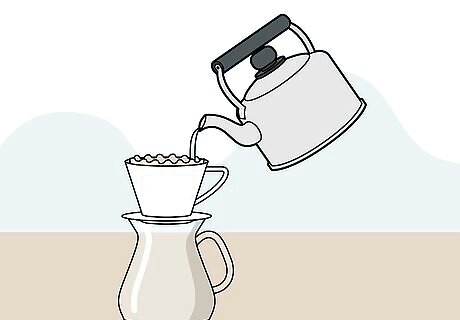
Preheat the pour over and filter. Unfold your paper filter and place it so that it fits the single cup brewer that you set over your coffee mug. Pour a little hot water over the filter so that it's completely soaked. Carefully pour out and discard the soaking liquid. There are a variety of single cup cone brewers available. These include Kalita, Bee House, Clever Dripper, and Hario V60. The brewer will sit atop the serving mug so the coffee filters directly down and into your mug.
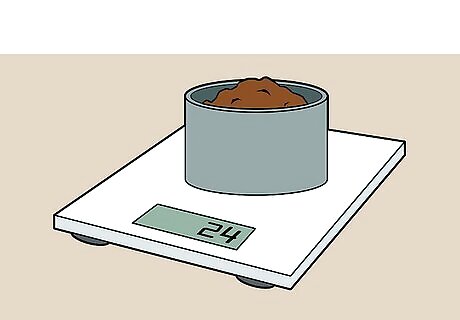
Measure your coffee. Weigh out 24 grams or about 2 tablespoons of ground coffee for your pour over brewer. Always use medium-coarse grounds. Using the right grounds will create the right extraction for the time you're brewing. For example, using a larger surface area (coarse grounds) requires longer brewing time than fine grounds that only need a quick extraction. If you can, grind your beans just before using them. Fresher beans will make a better tasting pot of coffee. If you need to buy pre-ground coffee, just take care to store it in an air-tight container out of direct sunlight and use it within a week.
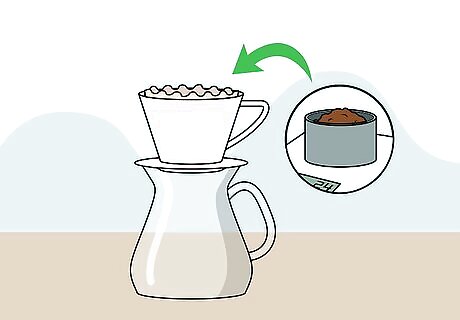
Prepare the pour over brewer. Place the grounds in the pre-moistened filter that should still be in the top of your pour over brewer. You should also have a digital timer or clock ready before you start brewing. You'll use about 400 grams of water which will yield one large cup of coffee.

Saturate the grounds. Start the digital timer or look at the clock to keep track of when you start brewing. Slowly pour about 1/4 of a cup or 50 grams of the hot water over the grounds in the filter. Gently stir the grounds and water (known as a slurry) with a spoon or chopstick. Stirring can break up any clumps of coffee grounds and make sure the grounds are completely saturated.
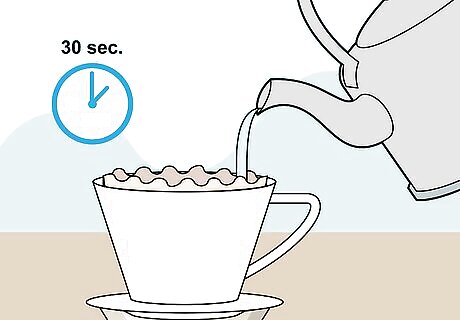
Wait and pour water over the grounds. Once your grounds are saturated, wait for 30 seconds. This allows the coffee grounds to bloom. Slowly, pour more water over the grounds so the filter is always half-full of water. You should use a circular wiggling motion when pouring the water over the grounds. This can help mix the coffee and water together.

Let the coffee brew. The water will slowly filter through the grounds and the paper, into the bottom of the pour over brewer. You don't need to stir the coffee; just let it filter down. Remove the filter and drink your coffee. This entire process should take a total of 2 1/2 to 3 minutes from the time you started brewing.















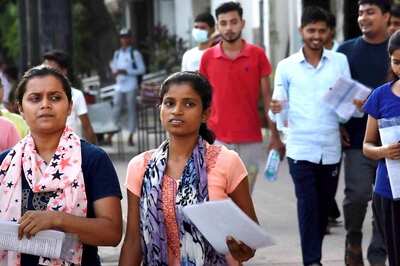

Comments
0 comment